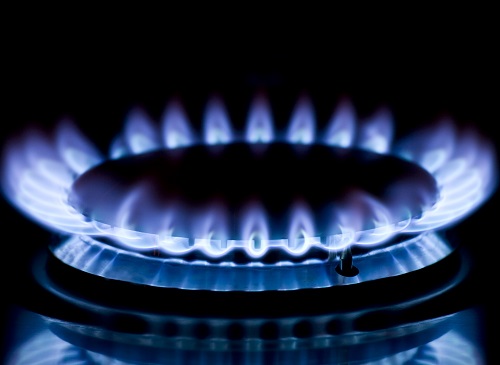US Natural Gas Falls 5% on Big Storage Build, Lower Demand Forecast
(Reuters) — U.S. natural gas futures fell about 5% on Thursday on a bigger-than-expected storage build and forecasts for lower demand over the next two weeks than previously expected.
Those lower demand forecasts should allow utilities to keep adding gas into storage for a few weeks beyond the usual Oct. 31 end of the injection season.
The U.S. Energy Information Administration (EIA) said utilities added 107 billion cubic feet (Bcf) of gas to storage during the week ended Oct. 28. Analysts said the build was bigger-than-normal primarily because the weather last week was mild, keeping heating demand low.
That was higher than the 97-Bcf build analysts forecast in a Reuters poll and compares with an increase of 66 Bcf in the same week last year and a five-year (2017-2021) average increase of 45 Bcf.
Futures prices declined despite forecasts for colder weather that should boost heating demand in mid- to late November, a drop in output so far this month and expectations gas demand will rise once the Freeport liquefied natural gas (LNG) export plant in Texas exits an outage.
Freeport LNG expects its 2.1-billion-cubic-feet-per-day (Bcf/d) export plant to return to in early to mid-November following an unexpected shutdown on June 8 caused by a pipeline explosion.
At least three vessels were lined up to pick up LNG at Freeport, based on Refinitiv data. Prism Brilliance and Prism Diversity were waiting off the coast from the plant, and Prism Courage was expected to arrive on Friday.
In what has already been an extremely volatile week, front-month gas futures <NGc1> fell 29.4 cents, or 4.7%, to $5.974 per million British thermal units (MMBtu) at 10:35 a.m. EDT (1435 GMT). That follows a rise of 12% on Monday, a drop of 10% on Tuesday and a rise of 10% on Wednesday.
Overall, U.S. gas futures are still up about 60% so far this year as much higher global gas prices feed demand for U.S. exports due to supply disruptions and sanctions linked to Russia's Feb. 24 invasion of Ukraine.
Gas was trading at $37 per MMBtu at the Dutch Title Transfer Facility (TTF) in Europe <TRNLTTFMc1> and $29 at the Japan Korea Marker (JKM) in Asia <JKMc1>.
Top Producer
U.S. gas futures lag far behind global prices because the United States is the world's top producer with all the fuel it needs for domestic use, while capacity constraints and the Freeport outage have prevented the country from exporting more LNG.
Data provider Refinitiv said that average gas output in the U.S. Lower 48 states fell to 97.8 Bcf/d so far in November, down from a record 99.4 Bcf/d in October. Traders, however, noted that early-month output figures were usually revised higher later in the month.
With the coming of seasonally cooler weather, Refinitiv projected that average U.S. gas demand, including exports, would rise from 97.6 Bcf/d this week to 99.5 Bcf/d next week. Those forecasts were lower than Refinitiv's outlook on Wednesday.
The average amount of gas flowing to U.S. LNG export plants rose to 11.5 Bcf/d so far in November with the return of Berkshire Hathaway Energy's Cove Point export plant in Maryland from a maintenance outage, from 11.3 Bcf/d in October.
That is still well below the monthly record of 12.9 Bcf/d in March due mostly to the ongoing outage at Freeport. The seven big U.S. export plants can turn about 13.8 Bcf/d of gas into LNG.
During the first 10 months of 2022, roughly 66%, or 7.0 Bcf/d, of U.S. LNG exports went to Europe, as shippers diverted cargoes from Asia to get higher prices. Last year, just 29%, or about 2.8 Bcf/d, of U.S. LNG exports went to Europe.
Related News
Related News

- Keystone Oil Pipeline Resumes Operations After Temporary Shutdown
- Biden Administration Buys Oil for Emergency Reserve Above Target Price
- Freeport LNG Plant Runs Near Zero Consumption for Fifth Day
- Enbridge to Invest $500 Million in Pipeline Assets, Including Expansion of 850-Mile Gray Oak Pipeline
- Williams Delays Louisiana Pipeline Project Amid Dispute with Competitor Energy Transfer
- Evacuation Technologies to Reduce Methane Releases During Pigging
- Editor’s Notebook: Nord Stream’s $20 Billion Question
- Enbridge Receives Approval to Begin Service on Louisiana Venice Gas Pipeline Project
- Mexico Seizes Air Liquide's Hydrogen Plant at Pemex Refinery
- Russian LNG Unfazed By U.S. Sanctions





Comments